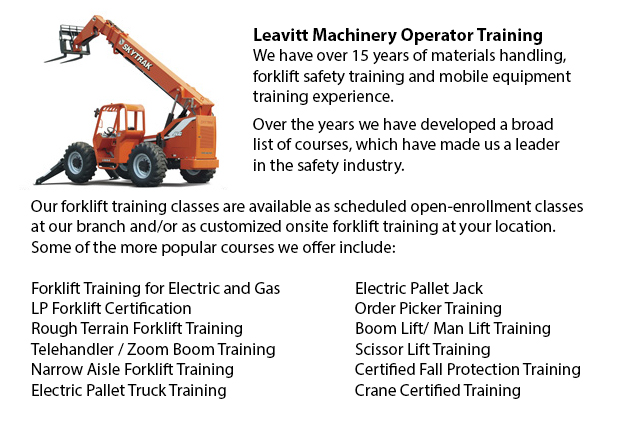
Markham Telehandler License - The telehandler or telescopic handler is a normally used equipment in industrial and agricultural applications. This particular equipment is the same in look to a forklift and also works in a similar manner, even though telehandlers are much more like a crane than forklift. It has a telescopic boom which could lengthen upward and forwards from the motor vehicle. The boom has the capability to fit one of several accessories including pallet forks, a bucket, a lift table or muck grab.
The most common telehandler attachments are pallet tines. The telehandler is used to transfer products in areas where the loads cannot be moved by a typical lift truck. Telehandlers are particularly helpful for placing loads on rooftops for instance, or for removing palletized cargo from with a trailer. Many of the jobs which a telehandler could carry out would otherwise need a crane and this piece of equipment could be costly, not always time efficient and impractical.
The boom acts as a lever, raising and extending while bearing a load. Though there are rear counterweights, this might cause the telehandler to become more unstable. Thus, the greatest advantage of the telehandler is likewise its greatest limitation. As the working radius increases, the lifting capacity decreases. The working radius is defined as the distance between the center of the load and the front of the wheels.
For instance, a telehandler with a 5000 lb capacity with the boom retracted can safely lift as little as 400 lb as soon as it is completely extended at a low boom angle. The equivalent equipment which has a 5000 lb lift capacity and the boom retracted could support as much as 10,000 lb with the boom raised to 70 degrees. The operator has a load chart to help determine whether a certain lifting task could be completed in an efficient and safe manner. This particular chart considers the boom angle, the weight and height.
So as to monitor the telehandler, they come equipped together with a computer which makes use of sensors. These sensors work to warn the operator, with some being able to cut controls to certain inputs if the limits of the vehicle are exceeded. Some telehandler kinds are likewise equipped along with front outriggers which are referred to as mobile cranes. These really extend the lifting capacity of the equipment while it is stationary.
-
Markham Forklift Certification Schools
Markham Forklift Certification Schools - Forklift Certification is mandatory in North America. Hence, forklift training programs are essential both for businesses and for people seeking jobs in industries as forklift operators. Forklift training focu... More -
Telehandler Training in Markham
Telescopic handlers normally called telehandlers for short, are a very popular piece of heavy construction equipment. They are commonly utilized in the construction and agricultural trades. These machines have maximum reaching capability and can get... More -
Markham Zoom Boom Training
Markham Zoom Boom Training - Zoom Boom Training is designed to train operators on variable reach forklifts. The objectives of the training are to impart an understanding of the physics of the machinery, and to outline the operator's tasks. This progr... More -
Markham Heavy Equipment Ticket
Markham Heavy Equipment Ticket - A heavy equipment operator will utilize different construction machinery, depending upon the nature of the task at hand. The large equipment are constructed to carry out specific tasks in the most efficient method for... More -
Markham Scissor Lift Training
Markham Scissor Lift Training - When operating a scissor lift, they must be utilized competently so as to protect the safety of the other employees inside the workplace and to protect the safety of the machine. Competent operators are trained to driv... More -
Markham Manlift Operator Training
Markham Manlift Operator Training - The aerial lift or manlift is a specialized kind of hydraulic platform which is designed to raise a person vertically giving it an alternate name of a vertical personnel lift. These machines are widely used for a m... More -
Markham Heavy Equipment Training
Markham Heavy Equipment Training - The two most common kinds of heavy equipment training are classed into the categories of machinery; equipment that is fashioned with tracks and those with rubber tires. The tracked vehicle are heavy duty equipment s... More -
Markham Forklift Safety Training
Markham Forklift Safety Training - Those wanting work in industries that utilize forklifts should undergo a forklift safety training course before becoming a certified operator of a forklift. There are various ways to go about getting forklift safety... More

Forklift Certification Markham
TOLL FREE: 1-888-254-6157
Markham, Ontario
forkliftcertificationmarkham.com
Email Us
About Us


